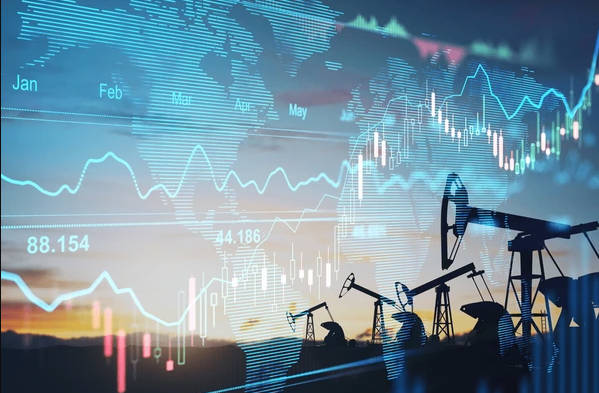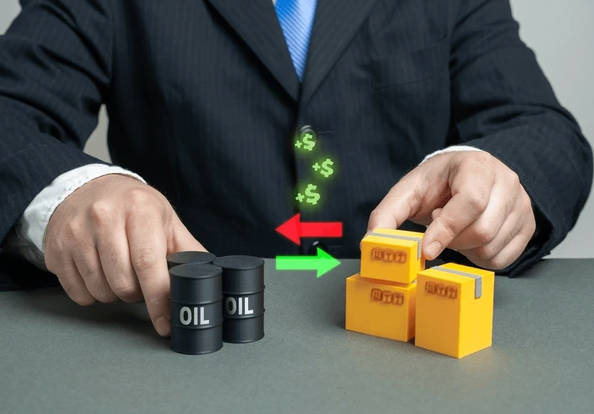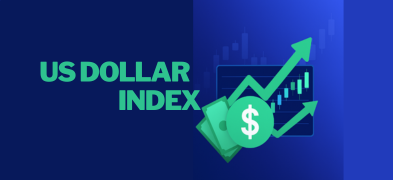Important Information
This website is managed by Ultima Markets’ international entities, and it’s important to emphasise that they are not subject to regulation by the FCA in the UK. Therefore, you must understand that you will not have the FCA’s protection when investing through this website – for example:
- You will not be guaranteed Negative Balance Protection
- You will not be protected by FCA’s leverage restrictions
- You will not have the right to settle disputes via the Financial Ombudsman Service (FOS)
- You will not be protected by Financial Services Compensation Scheme (FSCS)
- Any monies deposited will not be afforded the protection required under the FCA Client Assets Sourcebook. The level of protection for your funds will be determined by the regulations of the relevant local regulator.
Note: Ultima Markets is currently developing a dedicated website for UK clients and expects to onboard UK clients under FCA regulations in 2026.
If you would like to proceed and visit this website, you acknowledge and confirm the following:
- 1.The website is owned by Ultima Markets’ international entities and not by Ultima Markets UK Ltd, which is regulated by the FCA.
- 2.Ultima Markets Limited, or any of the Ultima Markets international entities, are neither based in the UK nor licensed by the FCA.
- 3.You are accessing the website at your own initiative and have not been solicited by Ultima Markets Limited in any way.
- 4.Investing through this website does not grant you the protections provided by the FCA.
- 5.Should you choose to invest through this website or with any of the international Ultima Markets entities, you will be subject to the rules and regulations of the relevant international regulatory authorities, not the FCA.
Ultima Markets wants to make it clear that we are duly licensed and authorised to offer the services and financial derivative products listed on our website. Individuals accessing this website and registering a trading account do so entirely of their own volition and without prior solicitation.
By confirming your decision to proceed with entering the website, you hereby affirm that this decision was solely initiated by you, and no solicitation has been made by any Ultima Markets entity.
I confirm my intention to proceed and enter this website Please direct me to the website operated by Ultima Markets , regulated by the FCA in the United KingdomWhat is Energy Trading? How Does It Work?
Energy trading has become the heartbeat of the modern energy system, connecting producers, traders, and consumers through a web of markets that balance supply and demand in real time. From crude oil and natural gas to wind and solar power, every trade reflects a global shift toward cleaner, data-driven energy systems.
In this guide, you’ll discover how energy trading works, the markets involved, and how technology and renewables are transforming the landscape in 2025.

What Is Energy Trading and Why It Matters
At its core, energy trading is the buying and selling of energy commodities such as oil, natural gas, electricity, and carbon credits to profit from price movements or hedge against market risk. Traders use fundamental and technical analysis to anticipate how global demand, policy, and weather will shape prices.
Beyond speculation, energy trading is what keeps modern economies running:
- Balances supply and demand across grids and regions
- Enables price discovery and transparency in energy markets
- Supports renewable integration by matching variable output with real-time needs
- Manages volatility for producers, utilities, and consumers
According to ExxonMobil, global energy demand could reach around 660 quadrillion BTUs by 2050, up about 15 % from 2021, for which growth led largely by emerging economies. Even as renewables expand, this rising demand ensures that energy trading remains essential to both profitability and grid reliability.
The Expanding Universe of Energy Assets
Energy trading now spans traditional commodities and newer renewable instruments:
- Crude Oil (Brent & WTI) – Still the world’s most liquid commodity, traded nearly 24 hours a day.
- Natural Gas – A vital transition fuel, traded heavily in both spot and futures markets.
- Electricity – Traded in day-ahead, intraday, and balancing markets to stabilise grids.
- Carbon Emissions – Allowances and credits traded under schemes like the EU ETS.
- Renewable Certificates – Represent solar or wind generation, supporting corporate sustainability targets.
As coal declines due to emissions limits, oil and gas continue to anchor global supply, while renewables rise sharply as key traded assets in electricity markets.
How Energy Trading Works

Market Instruments
Energy trading takes place through multiple instruments and timeframes:
- Spot Trading – Immediate transactions at current market prices.
- Day-Ahead Markets – Producers and traders forecast the next day’s generation and demand, locking prices for hourly delivery periods.
- Intraday Trading – Real-time adjustment markets used to balance sudden shifts in renewable output or consumption.
- Futures and Options – Long-term contracts that hedge or speculate on price changes weeks or months ahead.
- CFDs (Contracts for Difference) – Leveraged trades on price movements without physical delivery.
These markets are crucial for renewables, whose output depends on weather conditions. For instance, a wind farm may sell electricity in the morning and rebalance in the intraday market if wind speeds fall by afternoon.
Renewable Energy Trading Mechanisms
Unlike fossil-fuel trading, renewable-energy trading revolves around electricity markets and forecast accuracy.
- Producers – wind, solar, hydro, and biomass operators.
- Grid Operators – maintaining real-time stability.
- Energy Traders – buying from producers, selling to suppliers.
- Utilities & IPPs – purchasing power for consumers.
Markets such as OMIE (Spain / Portugal) and EPEX Spot (Western Europe) exemplify the day-ahead and intraday models that enable renewable balancing.
What Moves Energy Prices
Energy prices are influenced by the constant tug-of-war between supply, demand, and external shocks:
- Economic growth cycles and interest-rate policy affect demand.
- Weather drives short-term volatility, especially for renewables.
- Geopolitical events such as the Russia–Ukraine conflict reshape trade flows.
- Infrastructure constraints of storage, transmission, maintenance can cause local spikes.
In 2025, the IEA reports a global oil surplus of roughly 3 million barrels per day, keeping Brent crude around US$62 per barrel. Meanwhile, Ember Energy finds that solar and wind met over 80 % of global electricity-demand growth in the first half of 2025, underscoring how renewables now influence wholesale-price dynamics.

The Data Revolution in Energy Trading
Accurate forecasting and real-time visibility have become central to success. Companies like Enlitia are pioneering this space with:
- Real-Time Data Integration: Continuous monitoring of generation across wind, solar, and grid nodes.
- Advanced Forecasting Models: Machine-learning algorithms predicting production and consumption.
- Imbalance Penalty Reduction: Helping producers align output with commitments to avoid fines.
- Asset Optimisation: Analysing performance data to boost uptime and capture prices during high-demand periods.
These innovations, combined with AI-driven trading systems, allow firms to react instantly to weather changes or market signals. This is a must as renewable penetration deepens.
Regulation and Market Reform
Energy trading sits within a tightly regulated environment designed to ensure transparency and reliability.
- Europe’s REMIT and MiFID II frameworks prevent manipulation and protect consumers.
- Germany’s 2025 waiver on cross-border gas-storage fees has improved continental liquidity.
- Expanding carbon-pricing schemes continue to link environmental policy with trading economics.
At the same time, emerging flexibility and balancing markets pay participants for storing power or adjusting consumption are creating entirely new asset classes for traders.
Opportunities and Risks of Energy Trading
Though energy trading opens up a world of profit potential and innovation, it also comes with notable challenges that traders and investors must carefully manage. The table below highlights the main opportunities and risks shaping the market in 2025.
| Opportunities | Risks |
| Growth in renewable and carbon markets | High price volatility and leverage exposure |
| Expansion of intraday and balancing markets | Regulatory uncertainty and policy shifts |
| Use of AI and data analytics for smarter trading | Forecast errors causing imbalance penalties |
| Rising cross-border and regional energy trade | Grid bottlenecks and infrastructure limits |
Conclusion
Energy trading is no longer limited to barrels and pipelines. It sits at the intersection of finance, technology, and sustainability. From oil futures to intraday electricity markets, traders now navigate a data-rich, AI-enabled, and decarbonising world.
As global demand rises and renewable integration accelerates, those who combine market insight with digital intelligence will lead the next era of energy trading. One that’s smarter, faster, and greener.
Disclaimer: This content is provided for informational purposes only and does not constitute, and should not be construed as, financial, investment, or other professional advice. No statement or opinion contained here in should be considered a recommendation by Ultima Markets or the author regarding any specific investment product, strategy, or transaction. Readers are advised not to rely solely on this material when making investment decisions and should seek independent advice where appropriate.












